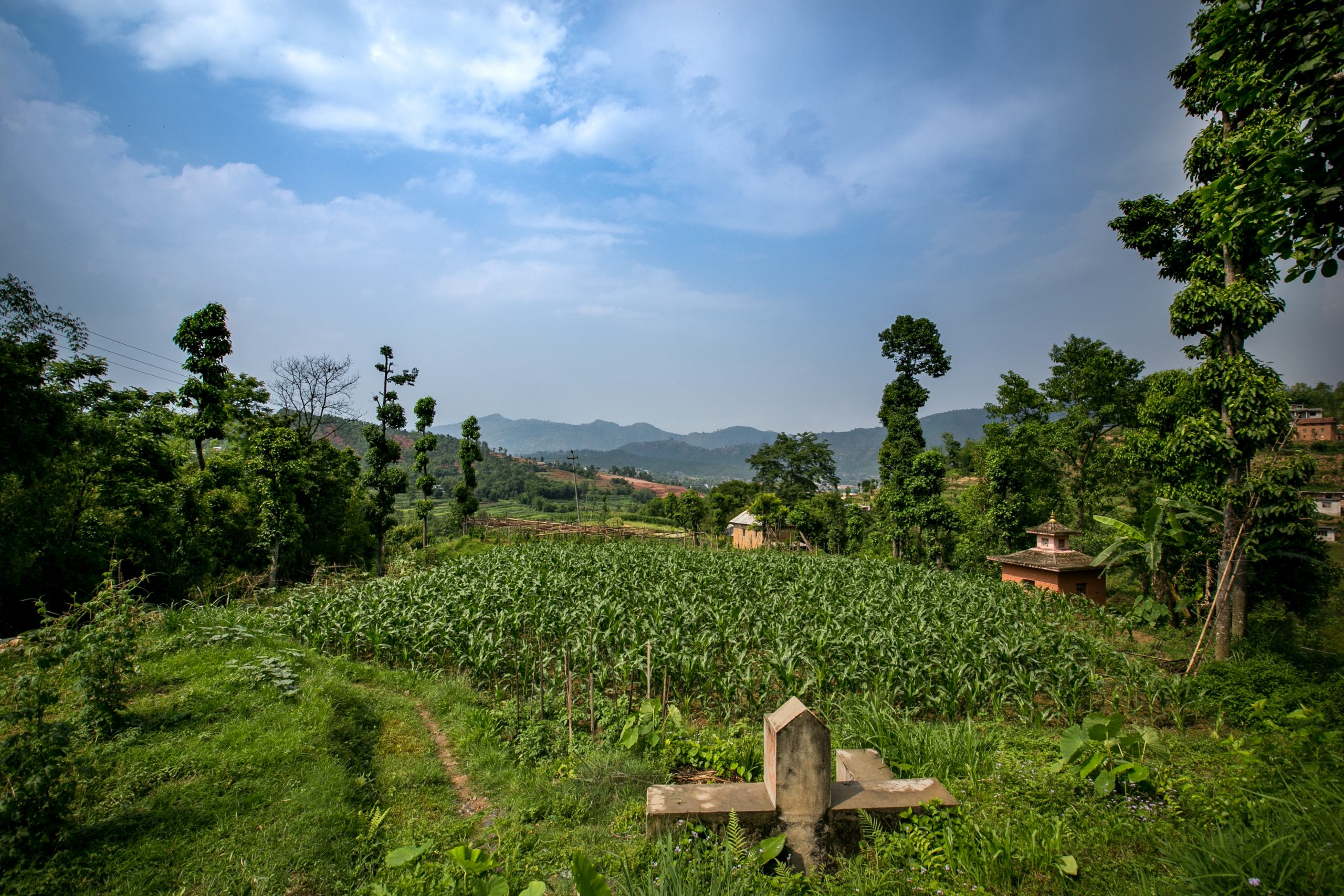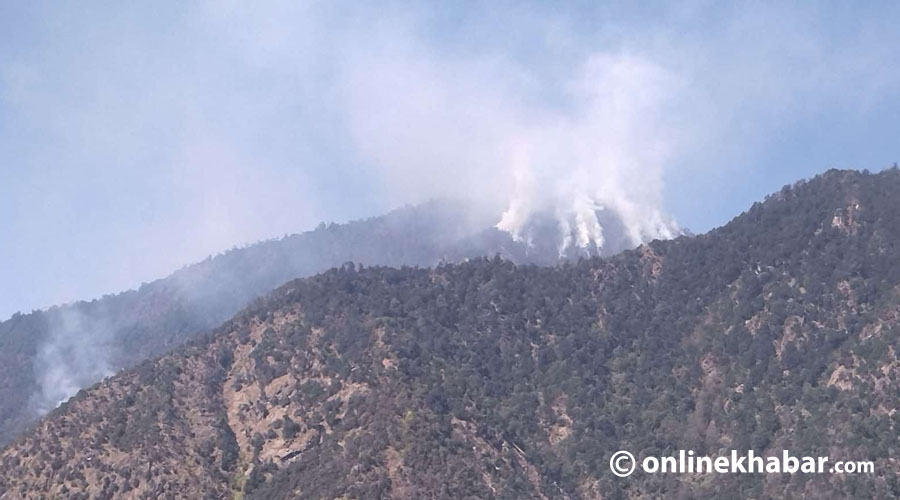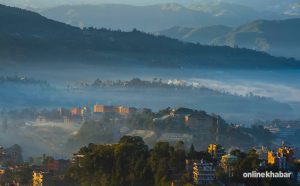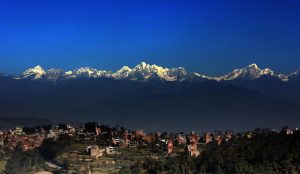Some five years ago, residents of the Kuikel Thumka village in the Namobuddha municipality-2 in the Kavre district used to travel to another village and buy vegetables enough for their weekly demands. But, today, the villagers have turned their condition around 180 degrees, and they are not just growing their vegetables but also selling them in neighbouring villages too.
They surely received some external help, but it was the villagers that have taken ownership and changed their livelihood. They say they are today happier than ever, to have sustainable and organic produce in their backyard. This Kavre village is an example of how modernisation does not have to be about tall, concrete buildings but more about adapting the tools and technology to their needs instead.
Making the infrastructure
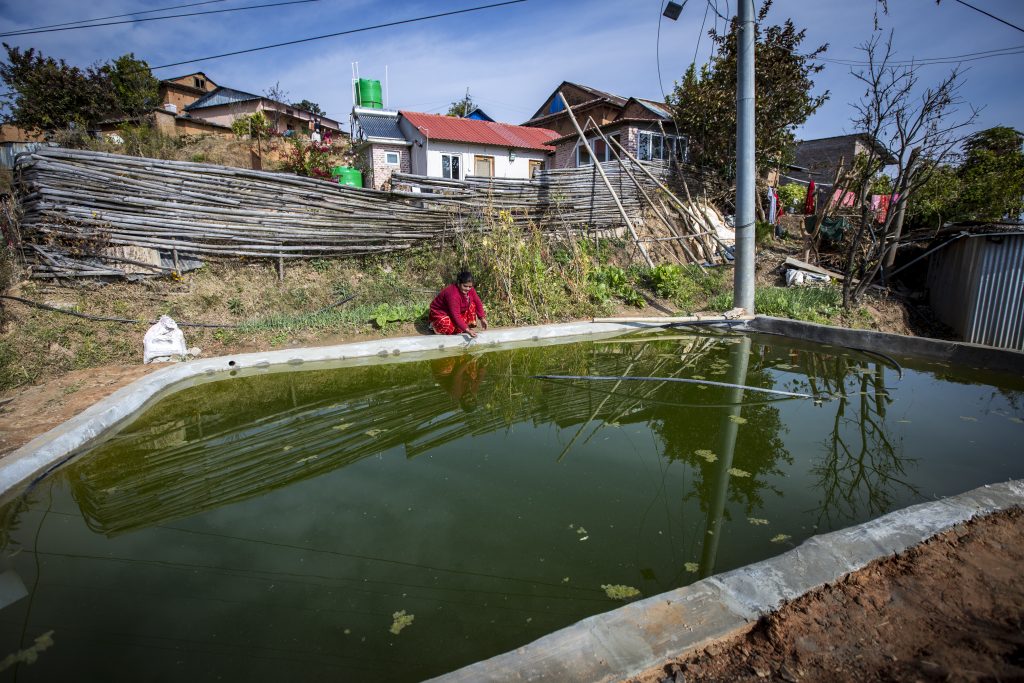
In Kuikel Thumka’s changed fate, several human-made ponds have played a vital role. Resident Geeta Kuikel explains, “Villagers received a nine-day training course and learned how to make yet sustainable ponds that could gather and store water, including rainwater harvesting techniques, for us to use for irrigation purposes all year round. We all donated labour and got our hands dirty so that the future would not seem that murky.”
“An average pond can even store up to 2,000 litres of water and they are made with a special mixture of plastic, cement and red soil. Though plastic, it is sustainable and pretty durable and leak-proof. Since it is leakproof, we are saving some Rs 5,000 annually that would have otherwise been spent for repair and maintenance,” shares Kuikel.
Kuikel informs that CEAPRED and ICIMOD gave them the training under the Resilient Mountain Solutions (RMS) initiative as its pilot project. According to the ICIMOD Regional Programme Coordinator Nand Kishor Agrawal, “The project has been replicated in many villages now. We targeted Kavre because it was closest to Kathmandu and also exhibited the most possibilities where the criteria were the most favourable. The villagers including women were also actively interested in the project.”
Meanwhile, they are also holding the project in Kavre with the motto ‘Ek Gaon, Ek Pokhari’ [one village, one pond]. “The ponds can be made with less than USD 100 of investment. The project focused on sustainable and easy-to-follow solutions. ICIMOD build us one pond at first, but we replicated and there are eight ponds in the village already that cater to one to three households,” Kuikel shares.
Increased productivity
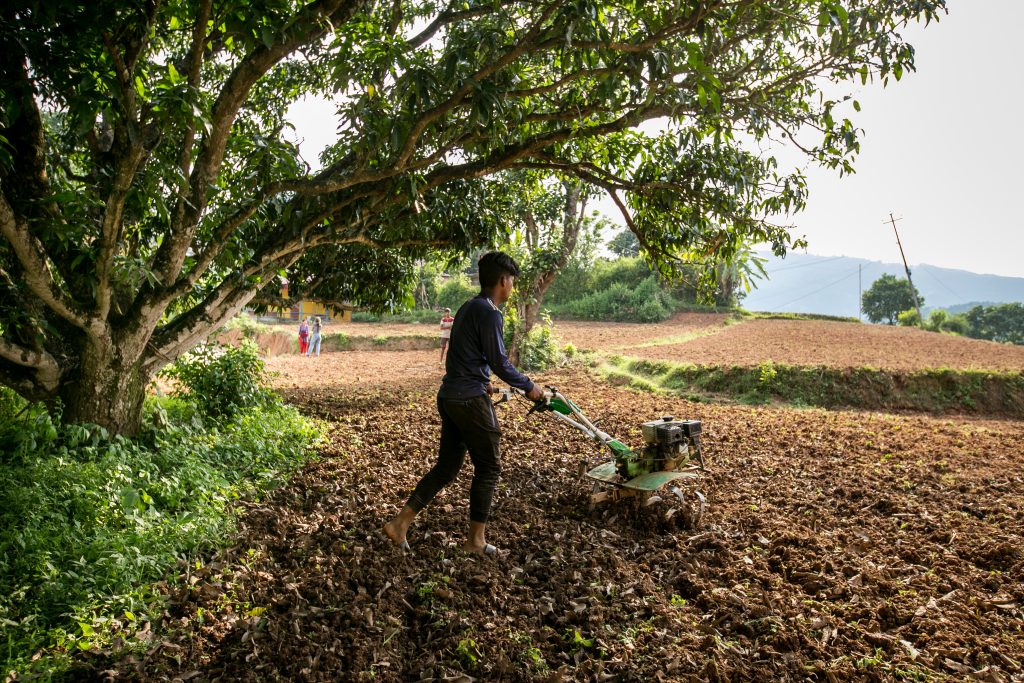
The Kavre village has started producing multiple vegetables year-round, including chilli, cauliflower and cabbage among others. “We also have a nursery where we grow plants and experiment there.”
Whereas some grow the vegetables individually, many villagers have come together and segmented the land where they grow the vegetables together. They also call one of these collective lands a knowledge park, where they have grown many vegetables and used many training-based skills and easy techniques to grow vegetables organically while keeping their fields safe from pesky insects. “We use jholmal and homemade fertilisers to fertilise the soil and use different (blue/ yellow) coloured sticky papers as well as easily available insect (tunnel) traps to keep the insects away.”
Speaking more on the knowledge park in Kavre, Kuikel explains, “We have segmented the whole area. And, in each of the segments, we have kept all the information and details of what is being cultivated, how and ways to maximise our productivity. So anyone can visit the field and then learn about the details and replicate as they see fit. The production has increased two-folds, and everyone here is happy.”
With a surplus, the Kavre villagers now even go door to door and outside their village to sell their vegetables at the right market price. “In the past, we had some outside traders who would come to the village and then sell us vegetables at higher prices whereas when we went outside they would not give us the market price. But, then, we got introduced to an app that gives us the right market price and we can now bargain and get the right price for our produce.”
Strong women presence
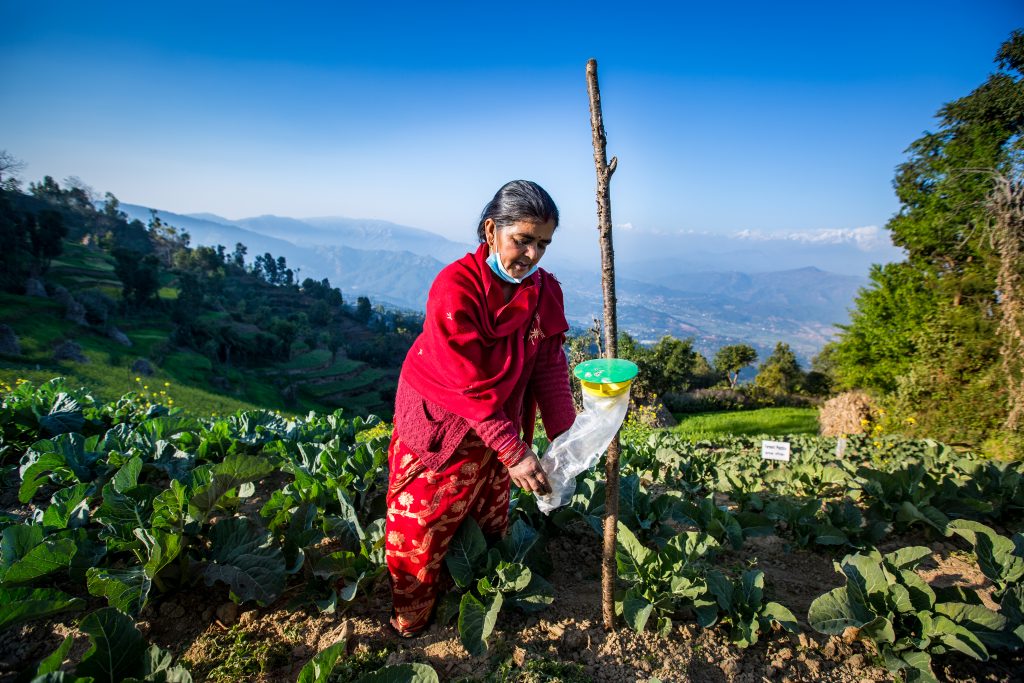
Contrary to other places, Kuikel Thumka in Kavre has a very active group of women who are all parts of the women-only organisation that has taken the responsibility to educate, regulate, and facilitate agricultural advances that are organic and adaptable.
Now, the women want to replicate the economically viable and beneficial idea in their neighbouring villages too. “The future of the village will include homestays too as we are planning to extend it to see how we can make our village a model village in more ways than one,” shares Kuikel.
Kuikel has also been instrumental in training the residents of the Kavre village. “I got a seven-day training course in 1992, in which I learned how to make biogas and adapt a smoke-free stove (with an exhaustion outlet) in my kitchen.”
She further explains, “The manure from the cattle is collected and stored in the biogas tank, where it is processed and then we get the biogas through a tube connected to our kitchen. The biogas is enough for some nine months a year and the rest is fulfilled by either firewood or LPG cylinders. It also decreased the use of firewood to one-fifth.”
“That has immensely changed my life as now I can cook smoke-free, which otherwise was a hassle for me before starting with difficulty in breathing,” Kuikel shares while showing the roof of her kitchen that had turned black with smoke.
Lesson for Kathmandu

Since the projects and ideas are adapted for this Kavre village, is there any learning for cities like Kathmandu? Or is it limited to villages?
According to Agrawal, the majority of the techniques, for now, are designed for rural settlements. However, he says, “The concept of the project is not to replicate the techniques only. The project can be adapted and adopted as per the needs of the villages and close settlements. We already have 16 learning hubs (model villages) in high hill areas like in Rasuwa where they have adapted the system as per their unique demand and that is very different from that in Kuikel Thumka or any other villages of Kavre. So even cities like Kathmandu can adopt the system.”
For Kathmanduities to adapt, he explains, “There are some solutions like jholmal that are easily replicable even in the city by people who love gardening or taking care of the plants or even those who are doing rooftop gardening. Other options are yet to be explored.”
“And, apart from that education and awareness about the project that produces locally and organically grown vegetables as they are in Kavre. We are still working on a way to get these healthy options to the city dwellers, which will ultimately benefit them as well. So, it is an integrated system,” he adds.
But, for city settlements, they are working on the areas of air pollution, working closely with motorcycle riders and brick kilns of the city, he shares, adding that they are looking for opportunities to work with local entrepreneurs as well.



